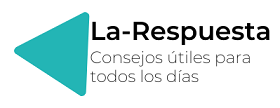¿Cómo se forma el primer condicional?
¿Cómo se forma el primer condicional?
El primer condicional se forma con esta estructura: If + presente simple, will + infinitivo. Se usa para hablar de lo que pasará en el futuro si se cumple una condición. La forma negativa puede ser con don’t, doesn’t o won’t, dependiendo de lo que quieres decir.
¿Cómo hacer oraciones con Condicional 1?
Ejemplos
- If it rains, you will get wet.
- You will get wet if it rains.
- If Sally is late again I will be mad.
- I will be mad if Sally is late again.
- If you don’t hurry, you will miss the bus.
- You will miss the bus if you don’t hurry.
¿Cómo hacer oraciones con zero conditional?
Ejemplos de oraciones en condicional cero
- If you heat water to 100 degrees, it boils.
- If public transport is efficient, people stop using their cars.
- If you cross the line, you are in our country.
- If children study, then their parents are happy.
- Plants die if they don’t get enough water.
¿Cómo formamos oraciones afirmativas con el segundo condicional?
sujeto + would / wouldn’t + forma básica del verbo. If I had more real friends, Si tuviera más amigos de verdad, I wouldn’t spend so much time on social media.
¿Cómo responder en el primer condicional?
En este artículo nos centraremos en formular preguntas como: Where will you go if you get lost?, Who will you ask if you don’t understand?…La práctica.
| ¿Qué hará (él) si se le acaba el tiempo? | What will he do if he runs out of time? |
|---|---|
| ¿Quién será mi jefe si tú dimites? | Who’ll be my manager if you resign? |
¿Cómo responder un condicional en inglés?
Ejercicios condicional if
- If you ____ (study), you will pass.
- It would have been a nice summer, if it ____ (rain, not) everyday.
- If Sally____ (work) less, she would have more time to look after her pets.
- If you heat water, it _____ (boil).
- If I were you, I ______ (apply) for that job.
